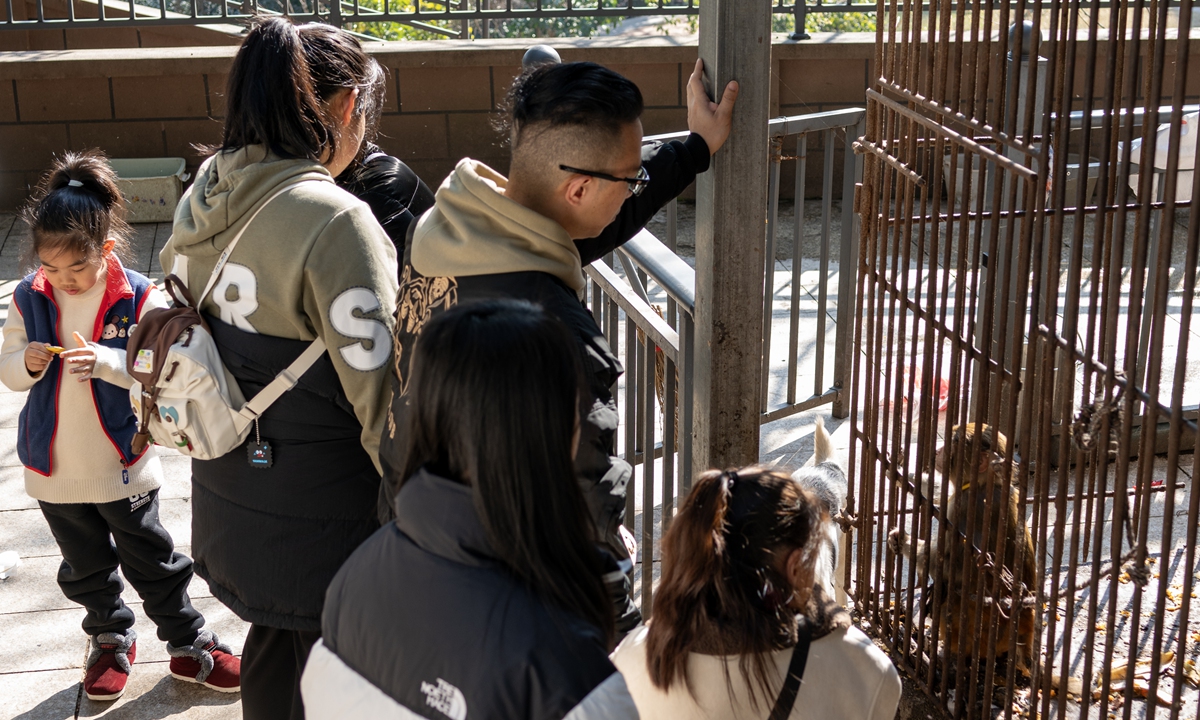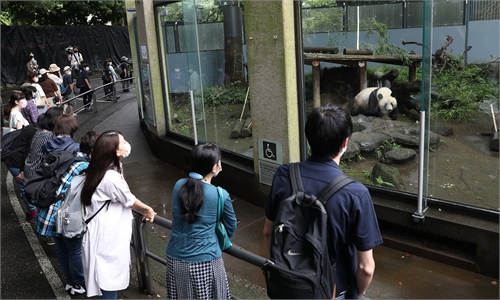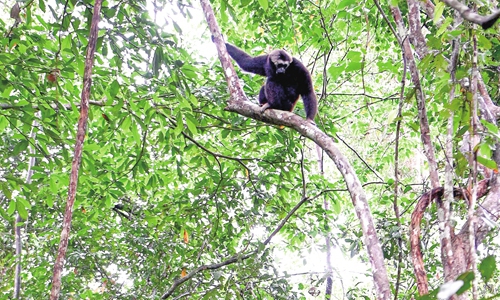ARTS / CULTURE & LEISURE
Blind expansion of zoos not advisable with animals suffering the most

Some children visit a local small private zoo in Enshi, Central China's Hubei Province, under the accompany of their families on Fabruary 11, 2024. Photo: VCG
Multiple abnormal deaths of animals in zoos, including the recently reported death of 20 Siberian tigers at a wild animal park in Fuyang, East China's Anhui Province, have sparked public concern and discussion on animal protection, with many calling for better treatment of animals. This is not the first time such incidents have occurred.
Around 2010, the Shenyang Forest Wildlife Zoo in Shenyang, capital city of Northeast China's Liaoning Province, suffered from poor management and lack of funds. Incidents such as animal starvation and employee strikes due to unpaid wages occurred one after another. Among them, the most notable event was the successive starvation deaths of more than 10 Siberian tigers.
A look back at the history of the zoo reveals that like most other urban zoos, it was once a park funded by municipal welfare and national allocations. At the end of the 20th century, the old zoo was restructured into a privately operated wildlife park. However, the operator overestimated the profitability of the zoo, resulting in income significantly lower than its investment. The poorly managed zoo incurred continuous losses and ultimately the serious incident in 2010.
After the incident, Shenyang helped fund the zoo and re-nationalized it. Today, the zoo is a state-owned enterprise and one of the first-class zoos in Northeast China. The animals - especially the Siberian tigers - are in good shape.
In recent years, a lot of hot money has flowed into the zoo industry, resulting in the establishment of several wildlife parks in various third and fourth-tier cities. On the other hand, due to tightening finances, several first and second-tier cities' public zoos are also being restructured, gradually transforming into privatized wildlife parks.
Such practice is not problematic per se. But some of these new zoos are built on an overly grand scale - completely ignoring the level of consumption in the cities where they are located - with the aim of attracting visitors from all over and using the industry's highest benchmark income levels to deceive investors. This has led to a scale that is completely disproportionate to actual consumption and weak operational capabilities.
Contrary to what many people may believe, in China, apart from a few well-known zoos, the overall profit in this industry is not good - although there has been a wave of enthusiasm in the recent years. Once the wave of zoo enthusiasm subsides, zoos across China are poised to experience a decline in revenue correlating with the decrease in visitor traffic. By that time, zoos in third and fourth-tier cities, whether private or public, may encounter financial problems. In such a situation, the animals will suffer.
A zoo is inherently a place of original sin, as it deprives animals of their freedom. However, in modern society, it is also an indispensable apparatus. Modern zoos have three main goals: first, to protect endangered animals, preserving their bloodlines and increasing their numbers through captive breeding; second, to enhance human's understanding of animals, particularly their behavior; and third, to provide education about nature to the public. A zoo that cannot achieve these three goals is unworthy of being considered a modern zoo and cannot justify its inherent original sin.
At the end of 2018, I spent four months traveling to 41 cities across China, visiting 56 zoos. My passion for animals and zoos was the primary motivation. I also wanted to get a grasp of the current situation of the zoo industry in China and share with the public how to enjoy visiting zoos.
Why visit zoos? Someone asked me this question. By visiting a zoo in person, it allows us to use our eyes to see, ears to hear, and even our noses to smell, experiencing the unique characteristics of each animal.
During my travels, I found many zoos in China that have their own strengths. Some zoos have put significant effort into animal enrichment.
For example, at the Harbin Northern Forest Zoo in Northeast China's Heilongjiang Province, keepers perform daily science education activities. A hippo keeper performs oral examinations on hippos while explaining to visitors what she is doing, the characteristics of hippos, and tips for taking care of the animals.
At the Xining Wildlife Park in Xining, Northwest China's Qinghai Province, a large number of native animals from the Qinghai-Tibet Plateau are the stars of the zoo. Detailed information introduces each snow leopard by name, background and behavior. These snow leopard stars have many fans on social media, attracting visitors from different parts of the country. Displaying individual animals with unique personalities helps build closer relationships between people and animals, encouraging the public to learn more about them. Star animals also attract more visitors, and their fans motivate keepers to be more attentive. In all aspects, this is beneficial. I believe that by following these successful footsteps, adapting and learning according to local conditions, Chinese zoos will lead to positive trends in the future development.
The author is a popular science writer, known for his pen name Hua Shi.



